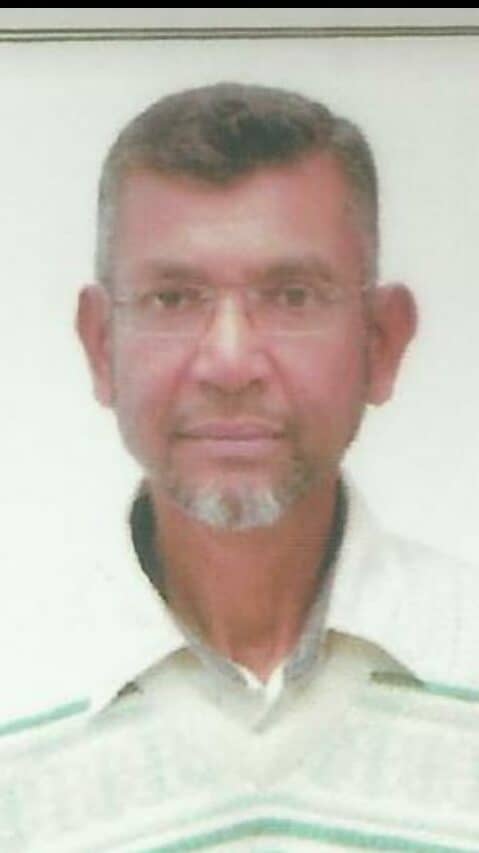
The Mughal Era in Indian History is often targeted by Hindutva extremists. The focus of their target is the Mughal Emperor Aurangzeb. Since his rule was the longest in Mughal history he is much criticized for his alleged rule in destroying Hindu temples. However, there are many tales which are contradictory to the popular myth associated with him. Prof. Nadim Razavi of the Aligarh Muslim University’s History Department says, Aurangzeb was a ruler of a vast empire and had to take a decision as the situation demanded. While he deemed it necessary to raze some temples at some places he donated tax-free Jagirs (fiefdoms) to temples at other places.
The Mughal emperor Aurangzeb granted Jagir of five villages to Shri Daoji Maharaj Temple situated at Baldev Village, about 64 from Aligarh and ordered to build its Main Hall. The revenue generated by these villages is still being donated by the Governments treasury for the upkeep of this Temple. The presiding deity of this temple is Balram the elder sibling of Shri Krishna. The world-famous Huranga Holi of Mathura is played by Devars and Bhabis in its main hall.
Mathura is the birthplace of Shri Krishna. This city has thousands of temples whose number is the second-highest after Kashi. The religious centres of Vrindavan and Goverdhan are found here. As per the Hindu religious belief, Shri Krishna is the incarnation of Lord Vishnu and is very much revered by Hindu devotees. Shri Krishna was born in a prison in Mathura where his maternal uncle Kans tried to kill him but he was saved by his father Vasudev with great difficulty.
Balram the elder sibling of Shri Krishna had helped him in his fight against the injustice. He is also known as Baldeo and Shri Krishna fondly called him as Daoji. His temple is located in a village in Mahavan Tehsil near Mathura.
About the Mughal Emperor Aurangzeb granting five villages to this Temple, the temple’s caretaker Anil Kumar Pandey says, The 580 acres of land was recorded in the name of Shri Daoji Maharaj and its revenue was used for the maintenance of the temple. Every inhabitant of Baldeo Towns 10 thousand population is aware of this historical fact.”
Brajesh Kumar Pandey another official of the Temples Management narrates a tale known to all the Brijwasis related to this temple. He says, Aurangzeb was advancing towards Mathura allegedly with an intention to demolish Baldeo Temple. Whenever he enquired how far the temple is his companions replied that it is just about four miles away. Even after hours of journey his companions were kept telling him that the temple is just four miles away. Aurangzeb felt it was some kind of miracle and hence give up the idea of demolishing this temple. Rather he assigned the revenues of 5 villages donated by him to this Temple.”
Aurangzeb was not a communal ruler”, opines Prof. Nadim Razavi of AMU who is doing research on Aurangzebs life and his Rule. “Had he been so, he would not have appointed Rajputs as Governors of some of the important provinces in his empire as these provinces were exclusive fiefdoms of the royal princes. He was merely an emperor who knew how to run his empire. He appeased Muslims at some places and Hindus at others.
Baldeo is also known for the famous Huranga Holi of Brij. Vipin Garg, a resident of the area says, “Holi is played here within the temples Courtyard by hundreds of Dewars and Bhabhis.”
Outside the main hall of the temple, there is a plaque inscribing the grant of five villages by Aurangzeb to this temple. Aurangzeb had also built the main hall of the temple naqqarkhana. Its inscription says: The Mughal Emperor Alamgir Aurangzeb had built the Naqqarkhana of the temple in Samvat (Hindu Calender) 1729 corresponding to 1672 and endowed the tax exempted fiefdom (Jagir) of five villages to this temple for the maintenance of this Main hall.”
The later Mughal Emperor Shah Alam not only continued this tax exempted Jagir endowment of five villages but further added two and a half villages to render it seven and half villages of fiefdom assigned to the caretaker Shri ShobhriVanshavantash Adigod Vipravansh Martand Goswami, a descendant of Shri Kalyan Dev, along with Goswami Hansraj Ji and Jagannath Ji. Furthermore, along with the ownership rights of Balabhadra Kund, each village of Mahavan Tehsil was taxed two Rupees extra for the maintenance and upkeep of Shri Daoji Maharaj Temple. This was done through a Farmaan (Edict) issued in 1196 Fasli (Mughal Revenue Calender) corresponding to Samvat 1840
(Hindu Calender year).
In addition to the above, Aurangzeb also granted endowments to other temples of Kashi and Mathura. He also continued the tradition initiated by earlier Mughal Emperors in granting endowments to temples across the country”, Razavi says.
Though, Pawan Pathak, the Tehsildar of Mahavan had not provided any document in this regard, but the famous Historian Ghanshyam Pandey of Mathura says, “there is irrefutable proof that Aurangzeb had donated tax-free fiefdom of five villages to Shri Daoji Maharaj Temple.” The Temples Receiver R.K. Pandey also corroborates this fact. “Currently the Aurangzeb’s name plaque had been removed from the temple premises but it is being kept safely due to maintenance work which is going on in the Temples main hall. The plaque will be installed at its original site once the maintenance work is over”, Pandey said.
Editor of www.akhbarulhind.com, specializes in Indo Arab relations and writes articles for English and Urdu Newspapers

